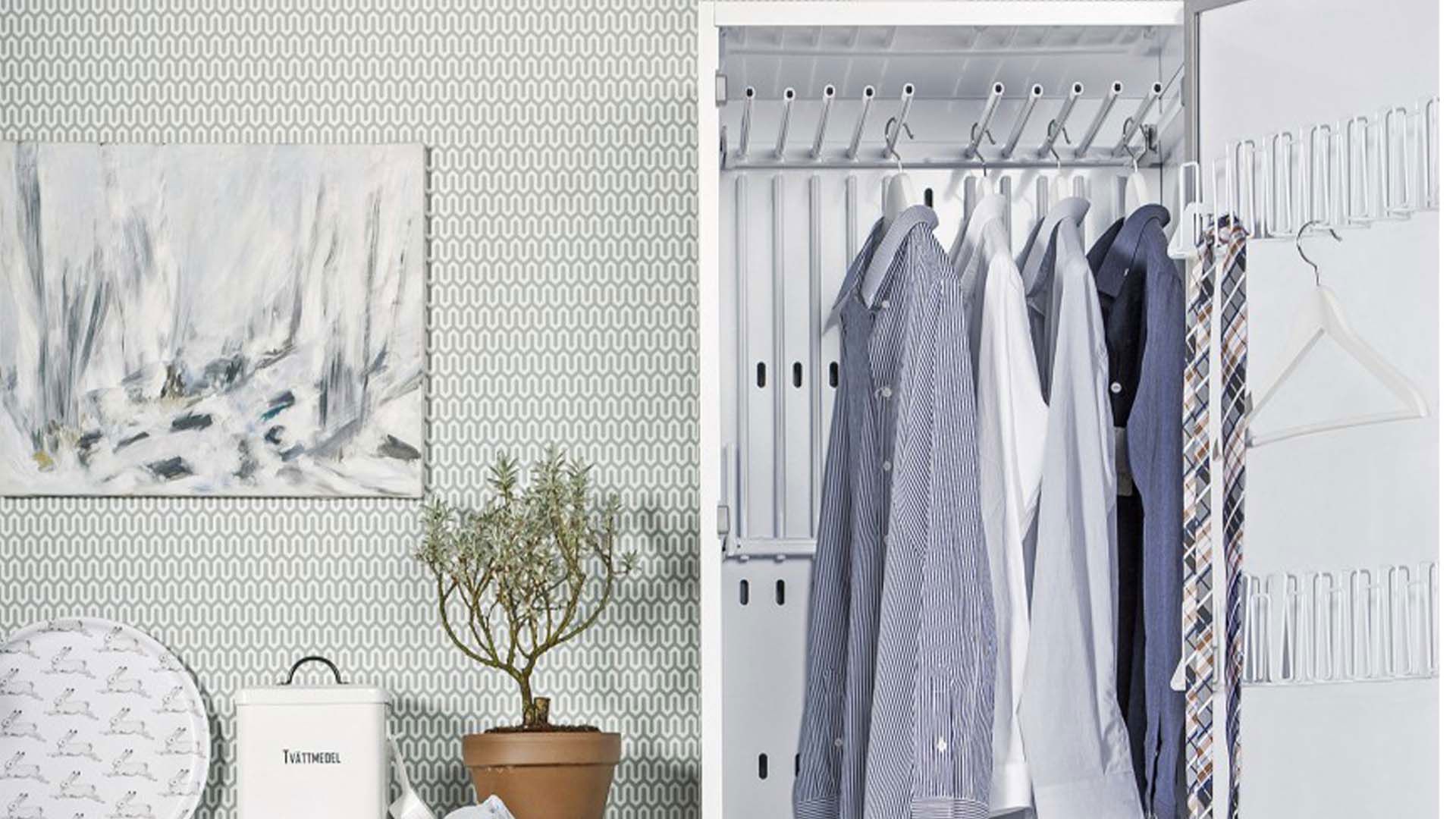True or false about dryer cabinets and textiles - an expert and scientist provides the answers
Some people still claim that dryer cabinets are energy-consuming, slow and expensive drying solutions that take up a lot of space unnecessarily in the home. Others claim the exact opposite, that they are an energy-saving hero in their daily life, unbeatably gentle on textiles and with a number of bonus features.

To find out what’s true or false about them, Nimo contacted a textile expert and scientist.

“A dryer cabinet is a great drying solution from many perspectives. It’s an excellent and gentle way to dry clothes and textiles indoors in a way that increases their lifespan. And the most durable textile is the one that lasts the longest,” says Mats Johansson from Texpertis AB and a former scientist at the University of Borås.
The fact that there are different opinions on whether dryer cabinets are efficient, noisy or sustainable depends largely on who you ask. Dryer cabinets have a long history in Swedish homes and businesses, a history that spans several generations. Many of the views that exist are based on outdated perceptions. As with other technologies, much has happened in the development of dryer cabinets. Today's modern cabinets are quieter, more energy efficient and gentler on clothes than ever before.
Why, then, do the old myths about dryer cabinets persist?
“Knowledge of washing and drying is something that is passed down through the generations. If, like many people today, you didn’t grow up with a dryer cabinet in your household, you may not consider it an obvious drying solution. However, it is a solution that more of us should be choosing. The younger generation is increasingly concerned with circularity and durability, so the modern, energy efficient dryer cabinet is a great alternative. It doesn’t wear the fabric and can dry all sorts of materials and garments, clean or dirty. It doesn’t take up much space and provides a better indoor climate.”
Dries all types of clothing and saves space
“A frequently asked question is how much laundry a cabinet can take. If you want to hang laundry up to dry, wouldn't it be better to use a washing line?
The fact is that a dryer cabinet that takes up only 1 square metre of floor space, has a hanging length of up to 16 metres. That’s the equivalent of many bulky metres of washing line to achieve the same effect. Although dryer cabinets might be considered a large product compared to other white goods, they are actually a smart way to save space in the home. And you can dry all types of garments in them.”
Are there any special types of clothes or materials that you shouldn’t dry in a dryer cabinet?
“No, there are no textiles that cannot be dried in a dryer cabinet. They can dry everything, and they can even be programmed. Using the humidity control of the sensors, it’s also possible to avoid over-drying, which can produce static electricity. When textiles are overdried, the fibres tear faster, so retaining the correct residual moisture is important for textile durability. There’s a reason why Swedish textile production is centred around Borås; this is a place where humidity conditions are optimal.”
Modern dryer cabinets are energy efficient
“To put energy consumption into perspective, a tumble dryer can consume between two and ten kWh per drying cycle. A modern heat pump dryer cabinet, such as the Nimo Eco Dryer, consumes only 1.3 kWh per cycle. For those who want to be extra energy efficient, you can use the dryer cabinet for only short intervals, with the option of finishing the drying process with the dryer door ajar.”
From a broader perspective, what knowledge of garment care (washing/drying) is important to provide for increased textile durability?
“Wash less, dry faster! We tend to wash our laundry far too much, too often and, many times, unnecessarily. Air, steam, remove stains. Drying quickly is also important. When laundry dries too slowly, bacteria thrive. Just think of what a damp dishwasher smells like. It’s easy to think that the garment or textile needs to be washed longer or at a higher temperature, but often a quick rinse of, e.g. sports clothes is sufficient, followed by a quick dry.”
Beware of excess humidity in your home
Drying the laundry indoors without taking into account humidity can cause problems with moisture and condensation. All moisture in wet laundry has to go somewhere. If it’s not vented or collected, it will end up on surrounding surfaces. If those surfaces are colder than the air in the room, condensation will form, just like on the glass of a cold drink on a hot summer’s day. Dryer cabinets take care of the moisture from the laundry and, as well as gently drying the textiles, also provide a better indoor climate.
“Increased indoor humidity can have a negative impact on textiles; if the clothes do not dry completely, the freshness achieved by washing and drying is lost. With a dryer cabinet, you have no excess humidity in the rest of the home, resulting in a better indoor climate for all textiles in the home.”
Read more about indoor climate
Affordable solution with minimal energy consumption
If you, as an individual, a property owner or a municipal or public employee, are thinking about acquiring dryer cabinets, a natural question you might have is whether they are more expensive than other drying methods. Nimo sells a variety of models of dryer cabinets in different price ranges. When looking at the cost, it is important to factor in a long-term perspective: the amount of money you can save in electricity consumption per year, and how the increased lifespan of your textiles means fewer clothing purchases.
What recommendations would you give when purchasing new drying solutions?
“Buy a modern, energy efficient dryer cabinet and use it properly, and clothes and textiles will last longer and your indoor climate will improve. You will also save space, as a cabinet only occupies a small amount of floor space. The smaller the dwelling, the greater the reason to invest in a dryer cabinet. What other drying solution offers 16 metres of washing line within the space of 1 square metre? You’ll also struggle to find a gentler way to dry laundry than in a dryer cabinet - both for the textiles and the home," says Mats Johansson of Texpertis AB and a former textile scientist at the University of Borås.
Common misconceptions about drying - the expert’s answers
The fluff that ends up in the filter during drying has already detached from the textiles, since the washing is only going around in hot air. What can be done if the fibres are already loose?
Mats explains:
“Fabric rubbing against fabric is what causes fluff. And if there are buttons, drawstrings and seams, the wear will be even more intense. In a dryer cabinet, clothes hang freely, with only warm air circulating. Laundry is dried without wear.”
We only use our dryer for hanging, we never turn it on. So we could manage with an airer.
Mats explains:
“For textiles to stay fresh and not need to be washed so often, it is important to dry them quickly. And by turning on the dryer and using the sensor function, you will also prevent excess moisture from spreading to the rest of the house.”
